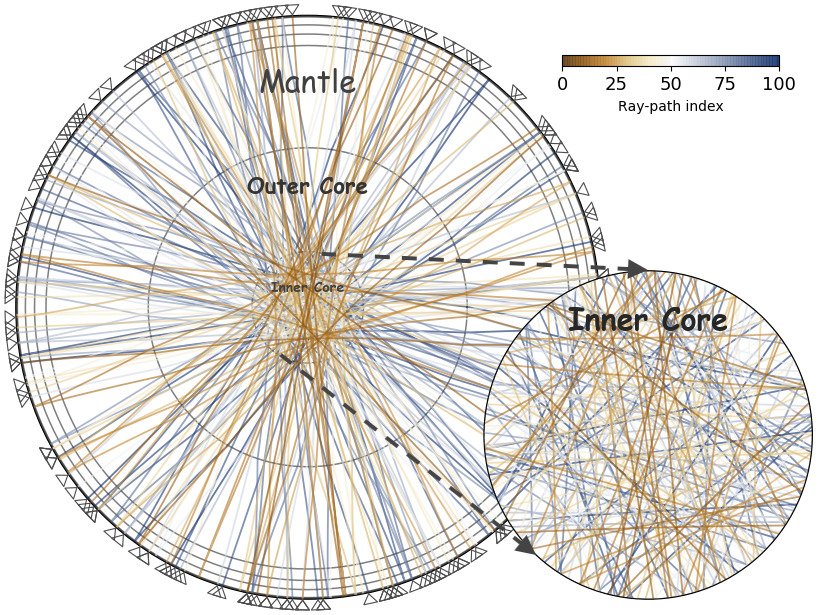Source: Journal of Geophysical Research: Solid Earth
Seismic tomography is among our most powerful tools to infer the deep structure of the Earth, thereby yielding information about its composition, dynamics and evolution. It is traditionally based on observations of few well-studied body and surface wave types, which limits tomographic resolution.
Wang and Tkalčić [2020] provide a theoretical framework that enables the use of a kind of waves that has so far been largely ignored in seismic tomography: waves that scatter multiple times after being excited by an earthquake, also known as coda waves. Their method provides a tool that synthesizes otherwise unobservable body waves from seemingly chaotic coda wave recordings. The synthesized waves correspond to complicated propagation paths through the Earth, thereby increasing illumination in deep parts of the planet that are not well sampled by more traditional observations.
In addition to the theory, the authors provide a data-based validation of their approach, as well as an application to the imaging of inner core structure.
Citation: Wang, S., & Tkalčić, H. [2020]. Seismic event coda‐correlation: Toward global coda‐correlation tomography. Journal of Geophysical Research: Solid Earth, 125, e2019JB018848. https://doi.org/10.1029/2019JB018848
—Andreas Fichtner, Associate Editor, JGR: Solid Earth
Text © 2020. The authors. CC BY-NC-ND 3.0
Except where otherwise noted, images are subject to copyright. Any reuse without express permission from the copyright owner is prohibited.

